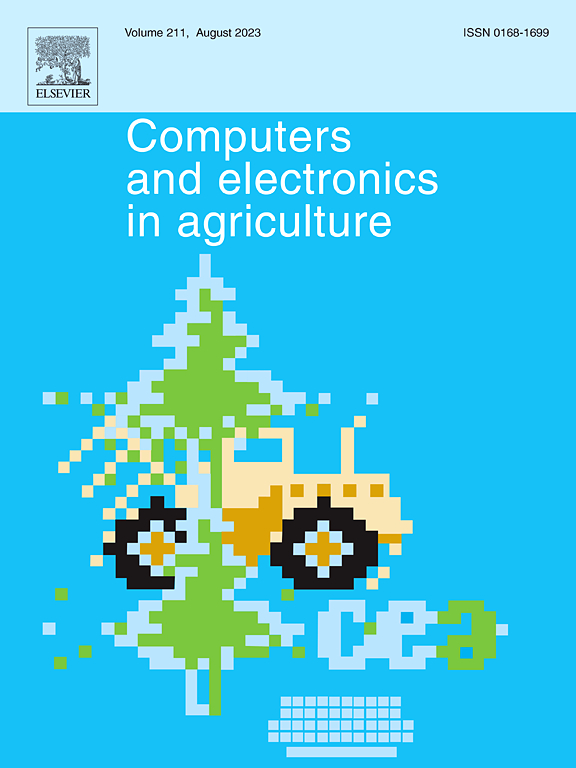Factors affecting deep learning model performance in citizen science–based image data collection for agriculture: A case study on coffee crops
IF 7.7
1区 农林科学
Q1 AGRICULTURE, MULTIDISCIPLINARY
引用次数: 0
Abstract
Citizen science is an effective approach for collecting extensive data scalable for deep learning, although data quality is debatable. However, few studies have determined the factors associated with data collection that affect model performance and potential sampling bias. This study aims to identify the factors that significantly influence the performance of a deep learning object detection model in agricultural prediction tasks. To do so, we analyzed errors in a You Only Look Once (YOLO v8) model trained for counting the number of coffee cherries in mobile pictures. The model was trained with 436 images taken in Colombia and Peru collected by local farmers as a citizen science approach. We analyzed the prediction errors of the model using 637 additional pictures. We then applied a linear mixed model (LMM) and a decision tree machine learning model to regress the model’s error against predictor variables related to the following categories: photographer influence, geographic location, mobile phone characteristics, picture characteristics, and coffee varieties. Our results show the strong influence of photographer identity and adherence (whether the image collection protocol was followed or not) on model prediction error. Following the protocol can increase model performance from an of 0.48 to 0.73. Additionally, model performance varied significantly depending on photographer identity, with ranging from 0.45 to 0.93. In contrast, factors such as mobile phone characteristics (e.g., frontal camera resolution, flash type, and screen size), using the screen behind the branch to obscure other cherries, coffee varieties, and geographic location did not significantly affect prediction error. These findings demonstrate that data quality in citizen science–based data collection for enhancing model prediction can be achieved through straightforward and comprehensive protocols, customized volunteer training, and regular feedback from experts. Such measures collectively support the robust application of deep learning models in agriculture. Furthermore, this study demonstrated that any mobile device with a camera can contribute to citizen science initiatives, underscoring the potential and scalability of this approach in agricultural research.
求助全文
约1分钟内获得全文
求助全文
来源期刊

Computers and Electronics in Agriculture
工程技术-计算机:跨学科应用
CiteScore
15.30
自引率
14.50%
发文量
800
审稿时长
62 days
期刊介绍:
Computers and Electronics in Agriculture provides international coverage of advancements in computer hardware, software, electronic instrumentation, and control systems applied to agricultural challenges. Encompassing agronomy, horticulture, forestry, aquaculture, and animal farming, the journal publishes original papers, reviews, and applications notes. It explores the use of computers and electronics in plant or animal agricultural production, covering topics like agricultural soils, water, pests, controlled environments, and waste. The scope extends to on-farm post-harvest operations and relevant technologies, including artificial intelligence, sensors, machine vision, robotics, networking, and simulation modeling. Its companion journal, Smart Agricultural Technology, continues the focus on smart applications in production agriculture.
 求助内容:
求助内容: 应助结果提醒方式:
应助结果提醒方式:


